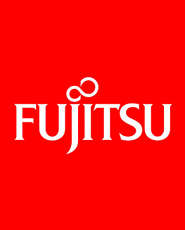Japanese systems vendor Fujitsu has historically modelled itself on IBM. Yet when IBM started to focus on the fast-growing, consistently profitable areas of software and services at the beginning of the 1990s, Fujitsu decided to remain resolutely hardware-centric.
Now, after a decade of stagnant revenues, Fujitsu has finalised its strategy to make good that mistake. At the beginning of April 2002, the company’s president and CEO Naoyuki Akikusa inaugurated a restructuring designed to bring fresh momentum to the company’s services, consulting and software businesses.
|
||
In doing so, Fujitsu wants to make a clear distinction between the IT services and consulting parts of its business, a move that accords with current trends in the services market, says Gartner Group analyst Cathy Tornbohm.
Fujitsu Services, based on the company’s 15,500-strong ICL, and ICL Invia divisions, and headquartered in London, will focus on infrastructure management and outsourcing, in Europe and Africa – geographic areas where ICL has traditionally been strongest, though the ICL brand will be dropped.
Former ICL CEO Richard Christou, who heads up the new organisation, says his immediate aims are to cut out unnecessary layers of management, to improve customer relations and to reorganise the group to make it easier for it to provide a wider range of services to each client. In line with those objectives, Christou has already attempted to ‘de-layer’ much of the management that used to run ICL’s separate divisions. “In the old ICL there were maybe three, four or perhaps five groups with separate headquarters. From April 2002, we will have only one headquarters,” says Fujitsu Services’ marketing director John Bennett.
Christou has also appointed unit directors to handle customers in different vertical industries – with each director responsible for the profit and loss account of their unit. That, says Ovum Holway analyst Anthony Miller, should help cut down on the kind of low-margin or even loss-making business that ICL used to carry in the 1990s, he says.
The second main thrust of Akikusa’s restructuring is Fujitsu Consulting. This new division, run out of New Jersey and with a workforce of 9,000, is primarily grouped around Fujitsu’s DMR Consulting subsidiary, although it also includes the application services unit of ICL (about 800 consulting and systems integration staff), the Dublin-based Fujitsu Solution Centre, the former Fujitsu Systems Business of America, and the systems integration business of the former Fujitsu Systems Europe. Unlike Fujitsu Services, which has no remit in North America, Fujitsu Consulting will be a global organisation – albeit one which is overwhelmingly US-centric. With Fujitsu Consulting’s launch on 1 April 2002, former DMR chief Michael Poehner was appointed as its head.
The third main element is the integration of the remnants of the IT services division of Fujitsu subsidiary Amdahl into Fujitsu Technology Solutions, Fujitsu’s US hardware arm. That will unite Fujitsu’s Sparc-based Unix and Windows server business with Amdahl’s IBM-compatible mainframe unit and associated infrastructure services business.
At the same time, Fujitsu is planning an audacious assault on enterprise software markets, spearheaded by its Fujitsu Softek and SystemWalker subsidiaries. Sunnyvale, California-based Fujitsu Softek was set up with a brief to develop and market a range of storage management software – some new, some inherited from Fujitsu and Amdahl’s mainframe divisions.
A more ambitious strategy is being pursued by the SystemWalker unit. Recognising that the high end of the systems management software market is saturated, Fujitsu has decided to target small- and medium-sized businesses.
First, it has created a stripped-down version of its suite solely for the European market. Second, its pricing is radically lower than that of its competitors. The cost of buying and implementing System-Walker to manage a 500 PC environment, for example, will be between £25,000 and £30,000, compared to a typical price of £200,000 or more for high-end products such as IBM’s Tivoli suite, claims Rob Horsfield, business development manager for Fujitsu Software in Europe.
Will the restructuring work? Fujitsu’s software and services strategy is fraught with challenges. To start, its move comes late in the day: long after the services sector boom has peaked. At the same time, the software markets that it is targeting are mature and consolidating fast.
Bennett admits that the new consulting and services structure will require a degree of fine-tuning during the next year. “They don’t seem to have ironed out some of the issues, such as how work will be passed between consulting and the services groups,” says Gartner’s Tornbohm.
That will be exacerbated by the fact that while Fujitsu Consulting is overwhelmingly US-focused, Fujitsu Services will operate largely in Europe – a situation that will see both turning to other, rival services organisations to win and fulfil contacts.







